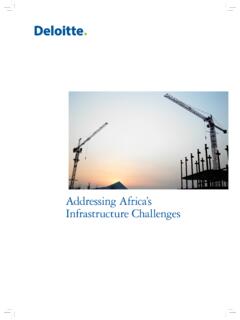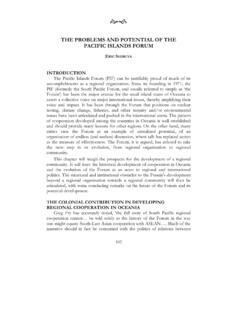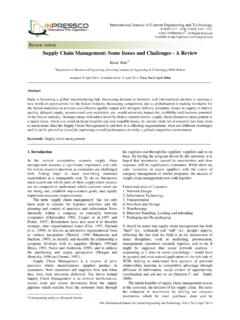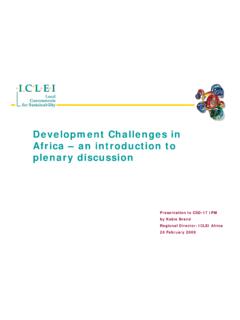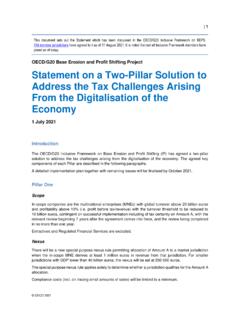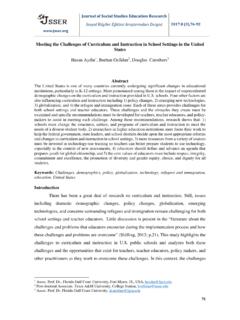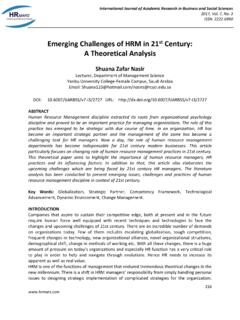Transcription of China's Agriculture: Achievements and Challenges - UCOP
1 5 Giannini Foundation of Agricultural Economics University of CaliforniaChina s Agriculture: Achievements and ChallengesColin A. CarterPersistent high food prices have drawn renewed attention to the role of China in world food markets. There is concern that China will be unable to keep expanding its food supply to meet growing demand for meat, becoming more dependent on world food markets and driving prices even higher. This article reviews Achievements made by China s agriculture and highlights key Challenges faced by that country in has been over 30 years since China abandoned its large com-munal farms.
2 Each farm had thousands of workers, assigned to production brigades. The communes were run by inefficient and corrupt top-down management, and state monopolies procured farm production at fixed prices. The communal farm-ing system was a complete disaster, underscored by the 1959 61 famine when an estimated 30 million Chinese residents starved to death. The com-munes were broken up in the late 1970s in favor of small, family-run plots with profit incentives tied to produc-tion and market-determined economic reforms that started in China s agricultural sector in the late 1970s then spread to other parts of the economy and we all know the rest of the story.
3 China has enjoyed very strong income growth and has emerged as a main driver of global economic growth. Deng Xiaoping moved China from a top-down planned economy to a market economy, and the results have been nothing short of , China produces 18% of the world s cereal grains, 29% of the world s meat, and 50% of the world s vegetables. This success makes China the world s largest agricultural economy, and it ranks as the larg-est global producer of pork, wheat, rice, tea, cotton, and fish. In fact, the value of China s agricultural output is twice the total.
4 See Figure 1 for China s share of world food produc-tion across various commodities. With only 9% of the global sown area, today China produces about 20% of the world s food a miraculous turn-around since the struggles faced by Chi-na s agriculture in the 1960s and 1970s under the collective farms. Despite predictions that China was going to starve the world , instead China has been able to balance its domestic grain supply and demand, with the excep-tion of oilseeds. China s agriculture has made notable Achievements in the last three decades.
5 Will this continue?After joining the WTO in 2001, China has played a greater role in world agricultural trade. China dramatically increased its trade dependence in agri-culture, and it is currently the fifth larg-est exporter and fourth largest importer of agricultural products in the world . China s substantial increase in fruit and vegetable production was a major factor behind its agricultural export growth. With imports growing faster than exports during the post-WTO acces-sion years, China reversed its long-time status as a net agricultural export-ing country to that of a net importing country since 2004.
6 As expected, with liberalized trade and market forces at Figure 1. China s Share of world Food ProductionPercentSource: Compiled from Food and Agriculture Organization (FAO) Land0 10 20 30 40 50 Giannini Foundation of Agricultural Economics University of California6work, China increased its imports of land-intensive agricultural of the increased imports came from soybeans and cotton. Today cotton and soybeans account for 43% of China s agricultural imports, a very con-centrated portfolio. China is the world s largest importer of soybeans and cotton, accounting for 60% of global soybean imports and 40% of cotton imports.
7 China s agriculture is supporting a population of over billion people today, compared to about 500 million in 1950, on a relatively fixed agricul-tural land base and shrinking water supply. The tale of China s agricultural success in meeting this challenge is two-fold. First, China has enjoyed very strong agricultural productivity growth, measured as the difference between growth of agricultural output and the growth of all inputs aggregated. Second, China has poured on farm inputs. China s annual agricultural productiv-ity growth rate was from 1970 2007, even higher than Brazil s and much higher than in the United States (which is less than ).
8 At the same time, China s farmers have intensively applied more chemicals and fertilizer to their crops to try and overcome the limitations of scarce land and water. In the 1980s and 1990s agricul-tural production in China grew by per year, much higher than in other populous countries such as India and Indonesia. Most of this growth came through yield gains rather than through increases in planted area. China boosted grain production by more than 50% during this time period. Grain production in 2010 was 80% above the 1978 level.
9 Per capita food supply in China rose from 2,328 calo-ries per day in 1980 to 3,029 calories in 2000, a 30% increase in just 20 years. China s chemical fertilizer use has roughly doubled over the past two decades while pesticide use and mecha-nized inputs have increased even faster. China has slightly less agricultural land than the United States, but its chemi-cal fertilizer use is now double that of the United States. China uses about one-third of the world s nitrogen fertil-izer and 31% of phosphate fertilizer on its 9% share of the world s agricultural land.
10 Unfortunately, the strong growth in chemical input use has resulted in considerable agricultural us not forget that China remains a developing country. In China 36% of the population still lives on less than $2 per day and most of these poor are in the countryside. Even though economic reform started in agriculture, non-agricultural economic growth has left the farm population to fall behind. The image we have of the new affluent Chi-nese consumers buying Gucci hand-bags in modern boutique shops does not apply to the nation s farmers.







